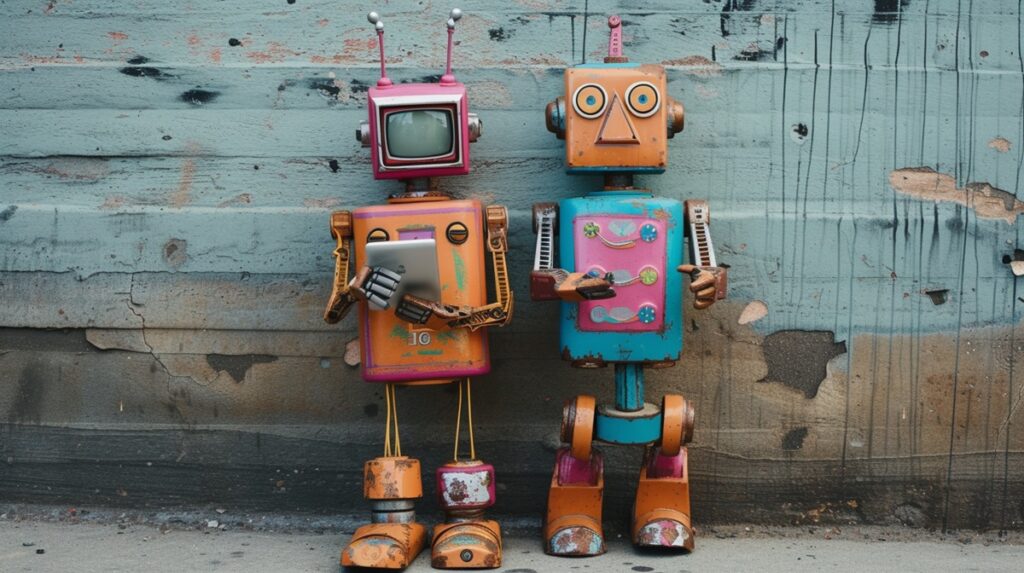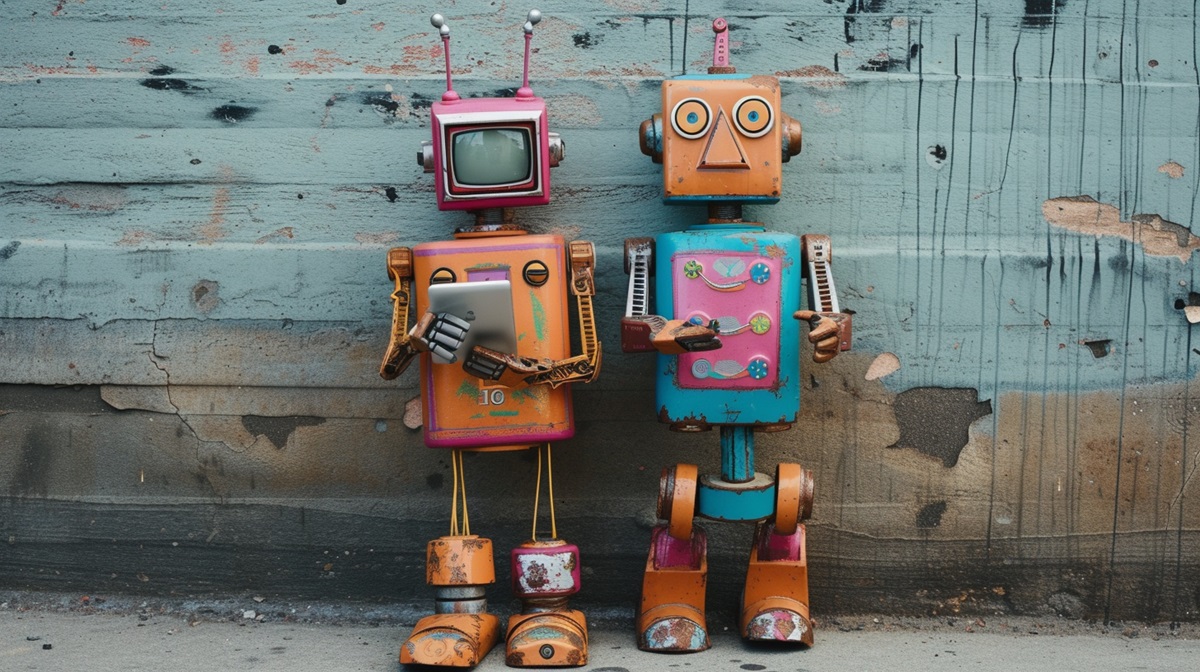Chatbots Vs Conversational AI: Differences You Should Know
Key Highlights
- Chatbots are computer programs designed to simulate conversation with human users, typically through text-based interfaces.
- Conversational AI is a broader field encompassing technologies that enable computers to engage in human-like conversations, including chatbots.
- Key differences between chatbots and conversational AI include their capabilities and underlying technologies.
- Chatbots are often rule-based, while conversational AI leverages machine learning and natural language understanding for more dynamic interactions.
Introduction

As business owners, we are always looking for new ways to improve customer engagement. Two words that come up a lot in this area are conversational AI and chatbots. People often confuse one with the other, but they have different meanings and purposes. In this blog post, I will explain the differences between chatbots vs conversational AI. I will tell you what each can do, where they can be used, and how they change the way businesses talk to their customers.
What are chatbots?
A chatbot is a simple computer program made to mimic talking with people. These programs use conversational interfaces, like messaging apps or chat windows on websites, to chat with users through text. Chatbots focus on tasks. They are built to understand user queries, give replies, or carry out specific tasks based on clear rules or using artificial intelligence (AI).
The growth of chatbots has improved greatly because of artificial intelligence (AI) and natural language processing (NLP). NLP helps chatbots understand and make sense of human language better, allowing them to have more lively and interesting conversations.
It provides fast and helpful answers to user queries. It is an important tool for business owners looking to boost customer support, make their operations smoother, free up some human resources, reduce operational expenses, and enhance user experience.
What is Conversational AI?
Conversational AI is a big step forward in AI technology. It includes technologies that help computers understand, interpret, and respond to human language like a real conversation. This is more than just recognizing words; it means understanding the meaning, intent, and feelings behind what people say.
Conversational AI uses advanced tools like natural language processing (NLP) and machine learning. This allows it to have more natural and human-like talks. With this, conversational AI can understand complex queries, learn from past chats, and change their answers based on those experiences.
Conversational AI includes tools like chatbots and virtual assistants that help computers talk with people. These technologies don’t just follow simple rules. Instead, they use advanced algorithms powered by artificial intelligence (AI) to understand and reply to what users say in a way that feels natural.
Components Powering Conversational AI Systems
Conversational AI systems work together using different parts to understand and create natural language. These parts help process information, find meaning and create responses that feel like human conversation.
- Natural language understanding (NLU): This important part helps the AI “understand” what the words mean. It breaks down sentences, looks at grammar, and finds the intent and key points in the text, which helps the system understand the user’s message.
- Machine learning: This key part lets the conversational AI learn from data and improve gradually over time. By looking at many conversation examples, the AI learns to spot patterns, guess what users will do next, and give more correct responses.
- Deep learning: A part of machine learning, deep learning uses artificial neural networks to process information like the human brain. This helps the AI understand more complex patterns, deal with unclear information, and create language that sounds more natural.
You can check out our What is Conversational AI article to learn more.
Difference between chatbot and conversational AI
Let’s have a look at different aspects of chatbots and conversational AI, which will answer the common question of chatbots vs conversational AI.
Chatbots vs conversational AI use cases
Chatbots are good at handling simple tasks. However, conversational AI improves interactions. It helps businesses deal with more complex problems and offers better customer experiences.
With its ability to understand context, learn from conversations, and personalize replies, conversational AI creates many opportunities in different industries.
Chatbot is best for customer support.
One of the best ways to use chatbots is in customer support. They are great at handling many customer queries, providing quick answers, and solving common problems quickly.
Chatbots can be added to websites as live chat tools. This helps visitors get quick help while using the site. They can answer common questions about products or services, give advice on managing accounts, and help with simple requests like resetting passwords.
By taking care of these everyday tasks, chatbots lighten the workload for human support workers. They also boost customer satisfaction by offering help right away.
Having said that if it is a more complex support issue conversational AI is the best way to go.
Conversational AI can make personalized product recommendations
Using conversational AI for personalized product suggestions changes how customers feel about their shopping experiences. It uses machine learning and NLP to understand what users want.
Unlike basic chatbots, conversational AI can grasp context and understand user queries along with preferences, leading to better interactions. It can analyze data quickly to find the right products based on specific keywords or earlier chats.
The personal approach increases customer engagement and helps boost business growth through tailored suggestions and improved user experiences.
Conversational AI can understand and resolve complex issues.
Conversational AI stands out in effectively solving tough problems, especially when compared to basic chatbots. It uses natural language understanding and deep learning, which helps it understand complicated customer queries and give personalized answers. By analyzing what users mean and the context of their questions, conversational AI can handle complex conversations easily and offer clear and accurate solutions. These advanced skills help improve customer satisfaction and loyalty, making conversational AI a key player in solving problems smoothly.
Emotional Support And Empathy
One of the great improvements in conversational AI is its growing skill in giving emotional support and showing empathy. This area is still growing, but AI systems are getting better at noticing and responding to human feelings, adding a real human touch to talks.
By looking at language clues, feelings, and voice tone, conversational AI can sense emotions like frustration, sadness, or joy. This helps the AI change its replies. It can offer kind words, understanding, or even humor to make the chat more caring and helpful.
Although conversational AI cannot truly replace the real empathy people show, it is a useful tool for businesses that want to meet changing customer expectations. Giving basic emotional support improves the user experience, builds stronger customer bonds, and shows a true care that goes beyond just business transactions.
Natural Language Understanding
At the center of conversational AI’s strength is its amazing natural language understanding (NLU) skills. This part of AI lets machines grasp and make sense of human language like people do.
Unlike traditional chatbots that use simple keyword matching, conversational AI chatbots use NLU to catch the meaning and intention behind the words. This helps them have more natural and smooth conversations. They can adapt to different ways of talking and understand complicated sentences.
Contextual awareness is another key feature of NLU. It helps AI remember past conversations, connect facts, and follow the flow of the ongoing chat. Being able to keep up with the conversation is important for having more engaging, personal, and human-like talks.
Functions of chatbots
The main purpose of a chatbot is to improve customer support and make user interactions easier. They can answer common questions, give product details, help users with steps, and even assist with purchasing.
By doing these tasks, chatbots allow human resources to focus on tougher problems that need critical thinking and problem-solving. This automation helps make things more efficient and leads to a better user experience.
Remembering that chatbots can do different things based on how they are made is essential. Simple chatbots use fixed answers and may struggle with complex queries. However, advanced AI chatbots can understand the context and have more natural conversations.
Varieties of Chatbots and Their Uses
Chatbots are great tools for businesses. They come in many forms to meet a variety of needs. From a simple rule-based system, these chatbots have now become smarter and capable of handling complex interactions thanks to AI technology and natural language processing (NLP).
In customer service, chatbots do a great job handling common questions. They provide instant help and guide users through basic troubleshooting. You can find them on websites, social media, and in messaging apps.
Apart from customer service, there are different types of chatbots that help with business growth. They can help find new leads, schedule appointments, and give personalized product suggestions. This ability makes chatbots important resources for businesses in many fields.
Traditional vs basic chatbots
The world of chatbots has two main types: traditional chatbots and basic chatbots. Both types want to mimic conversations, but they work differently because of the technology behind them.
Traditional chatbots are also called rule-based chatbots. They work using fixed rules and follow decision-tree logic. This means that when a user inputs something, the chatbot gives back set responses. However, they don’t really understand the nuances of language. They cannot manage questions that are not part of their programming.
In contrast, basic chatbots also follow rules but use some more advanced techniques, like keyword recognition. This helps them give a bit more varied responses. However, they do not learn or become flexible like AI-powered chatbots do. As a result, their ability to have real conversations is limited.
Use Cases where chatbots shine
Chatbots are great tools for businesses that want to automate tasks and make things run smoother. They can talk to people, give information, and even do certain actions. This makes them useful for many different jobs.
They help make customer support easier and can also take care of appointment scheduling. In this way, chatbots are changing how businesses connect with their customers. Let’s look at some ways chatbots are helpful and show their worth in today’s online world.
Appointment Scheduling
Another way chatbots show their usefulness is in appointment scheduling. By working with a business’s scheduling system, chatbots can take care of booking appointments, sending reminders, and handling cancellations without needing help from people.
When a user talks to the chatbot, it can recognize their request for an appointment using specific keywords or phrases. The chatbot then asks a few questions to find out the user’s availability and their preferred service or staff member. After that, it suggests the best times for appointments.
This smooth and automated support saves time for both the business and the customer. It also lowers the chances of making scheduling mistakes. By linking with calendars and sending automatic reminders, chatbots help make sure that appointments are kept. This means fewer missed appointments and more efficiency for businesses in many fields.
Order Status Updates
In today’s busy world, customers want quick information about their purchases. Chatbots are great for this. They give instant and correct order status updates.
If a customer has a question about their order, they can talk to the chatbot. It can get the needed information from the company’s database. This helps customers see shipping status, estimated delivery times, and any delays quickly.
By using chatbots, businesses can lower the number of customer inquiries about order tracking. This allows customer service agents to handle more complicated issues. This self-service system gives customers the information they want, when they want it. It increases their satisfaction and builds trust in the brand.
Automated Support
Chatbots are great at offering general automated support in many ways. They serve as virtual assistants that are always available to help with user queries, guide users, and give information.
With AI technology and natural language processing, modern chatbots understand what users want. They provide responses that are relevant and make conversations feel more natural. This helps users avoid frustration when they need to find information or use complex systems.
Chatbots help with solving technical problems, giving product suggestions, or answering common questions. They improve the customer service experience by taking care of simple inquiries. This allows human agents to deal with more complicated issues, leading to better efficiency and customer satisfaction.
FAQs
Many businesses use chatbots as interactive FAQ sections on their websites and apps. These chatbots are made to answer common questions that users may have. They provide quick and easy access to information.
Users can ask their question or look through set categories. They can interact with the chatbot to get the answers they need. This helps to avoid going through long FAQ pages or reaching out to customer support for simple information.
Using a chatbot as an interactive FAQ section has many benefits. It makes sure information is consistent, accurate, and always ready. This gives a good user experience. Plus, the chatbot can learn from user queries and grow its knowledge base over time. This way, it can answer new questions and provide better support.
Chatbots Vs Conversational AI
The terms “chatbots” and “conversational AI” are often used in the same way, but they mean different things. It’s important for businesses to know these differences if they want to use these tools well.
All chatbots are part of conversational AI, but not all kinds of conversational AI are chatbots. Chatbots usually do specific tasks and use set answers. On the other hand, conversational AI can do much more. It includes natural language understanding, awareness of context, and the ability to learn and improve over time.
Rule-Based Responses vs. AI-Driven Interactions
A key difference between basic chatbots and conversational AI is in how they handle information and form responses. Basic chatbots, known as rule-based chatbots, use a set of fixed rules.
These rules tell the chatbot how to respond to certain keywords or phrases. This makes them less flexible and limits their conversation ability. They can manage simple questions or provide basic information well, but they have trouble with complex questions, language differences, or anything beyond what they are programmed to do.
Conversational AI, however, works using machine learning and natural language understanding (NLU). These advanced methods let conversational AI systems understand human language better. They can grasp the meaning behind what people say and learn from past conversations. This helps them have more natural and personalized talks, making their interactions feel more like talking to a human than the basic chatbots.
User Experience: Chatbots vs. Conversational AI
Conversational AI is much better than traditional chatbots when it comes to user experience. It uses natural language processing and machine learning to create a more human-like and engaging chat.
This type of AI can understand the details of human language. It gets slang, everyday sayings, and even spelling mistakes, making conversations feel more natural. It also remembers previous interactions. This helps it give answers that are more relevant and makes the experience more personal.
Traditional chatbots usually follow strict rules. This can make them seem robotic and unhelpful. Users might see the same answers over and over. They may also struggle to explain what they need or get stuck when they go off the usual paths.
Conversational AI, on the other hand, aims to have conversations that flow like real human talks. This makes chats more enjoyable and effective. It can lead to happier customers, more engagement, and a better view of the brand.

